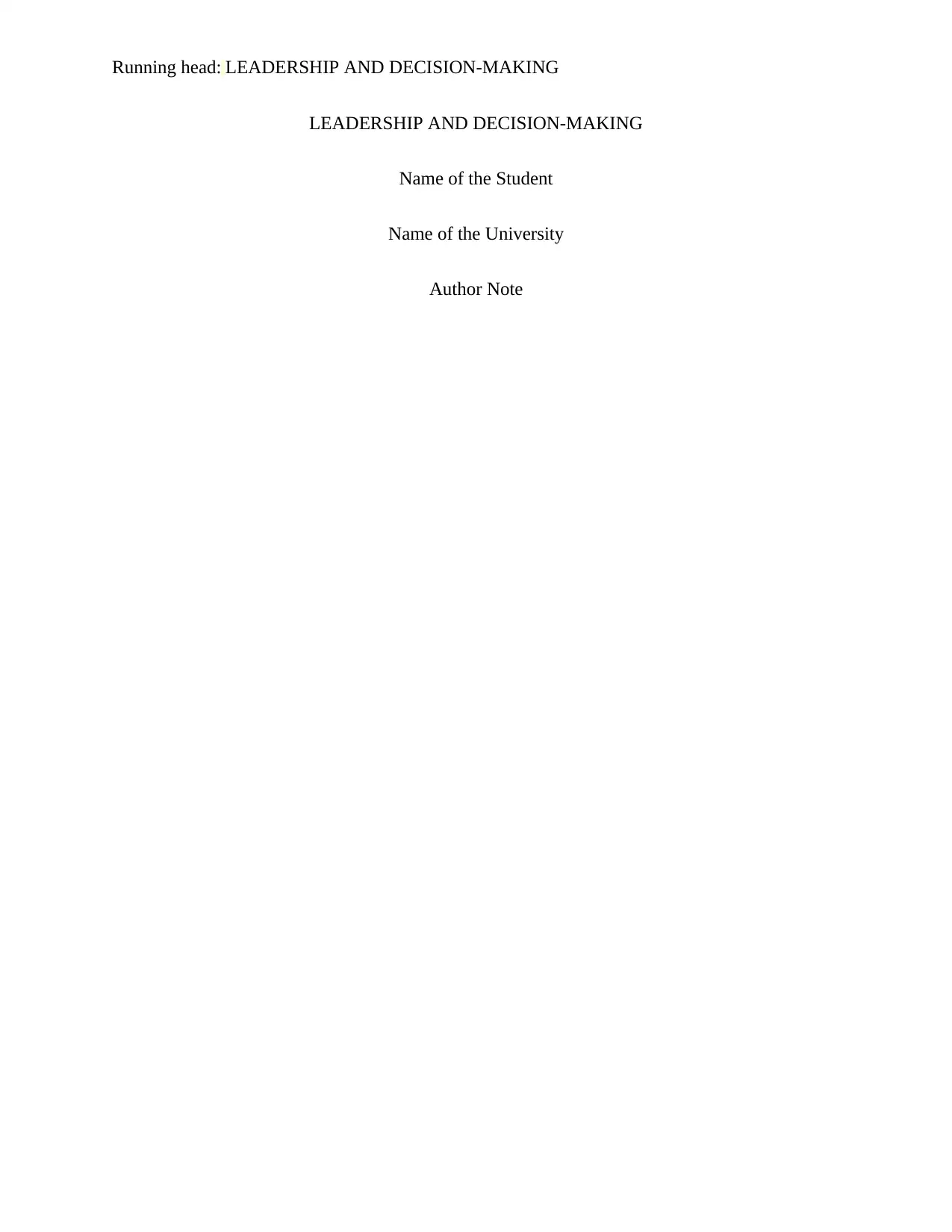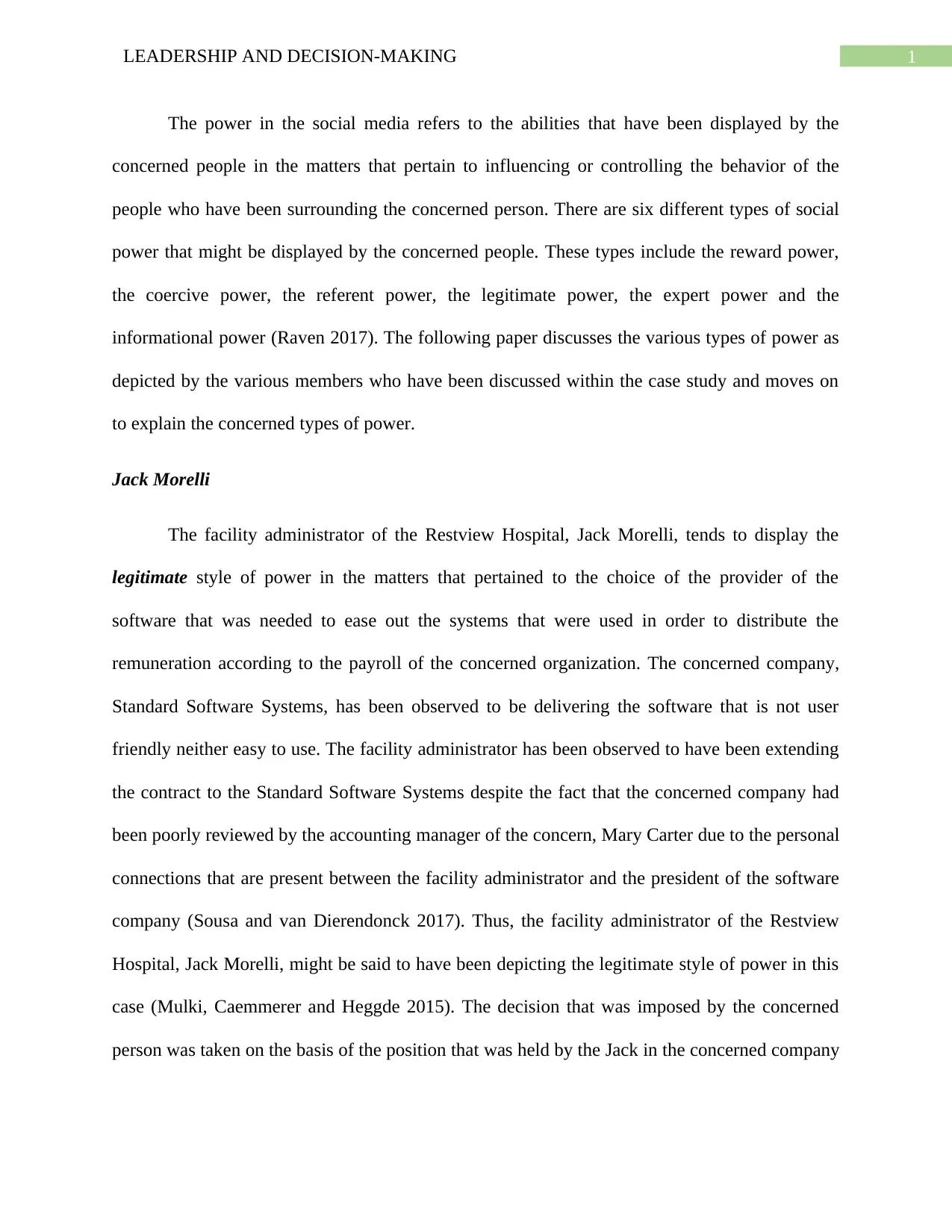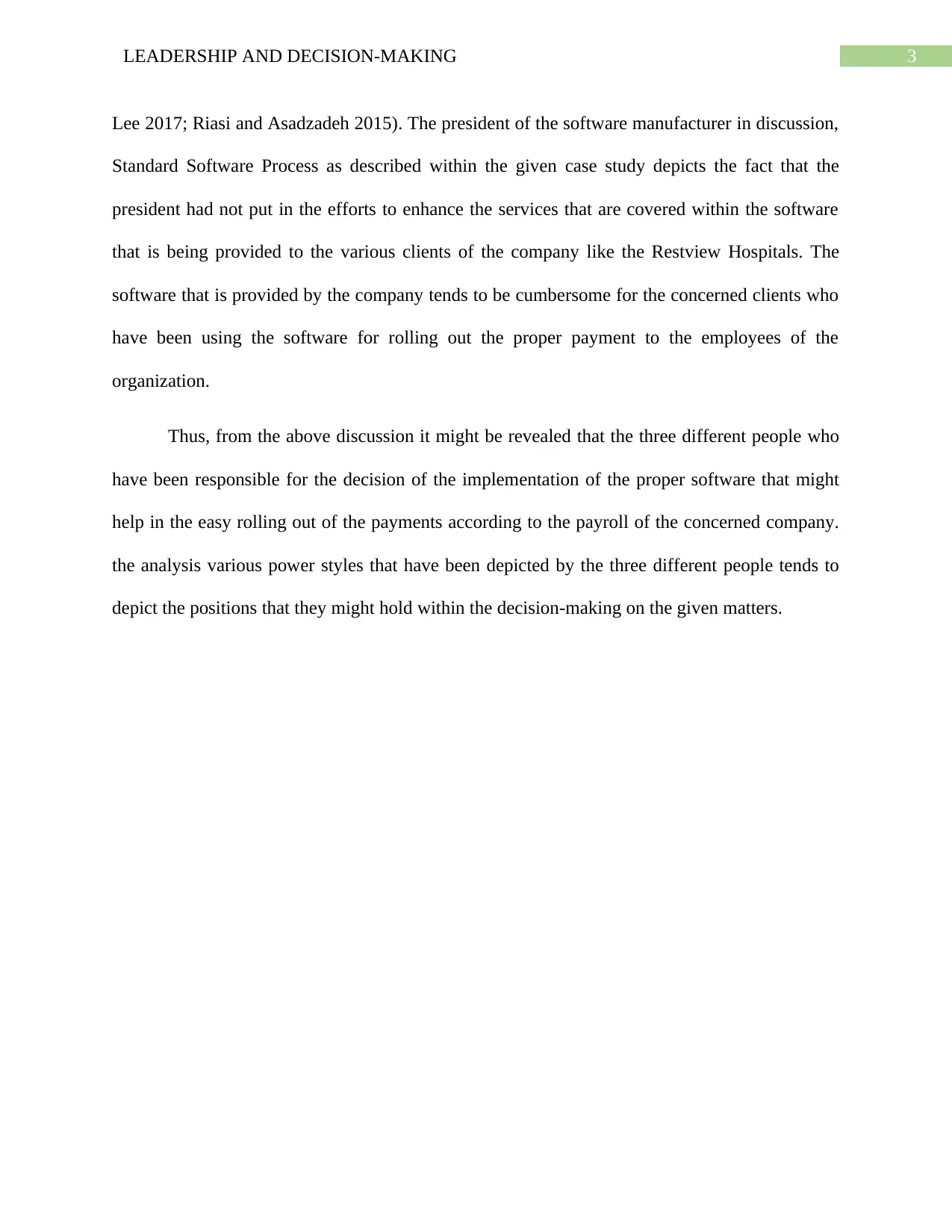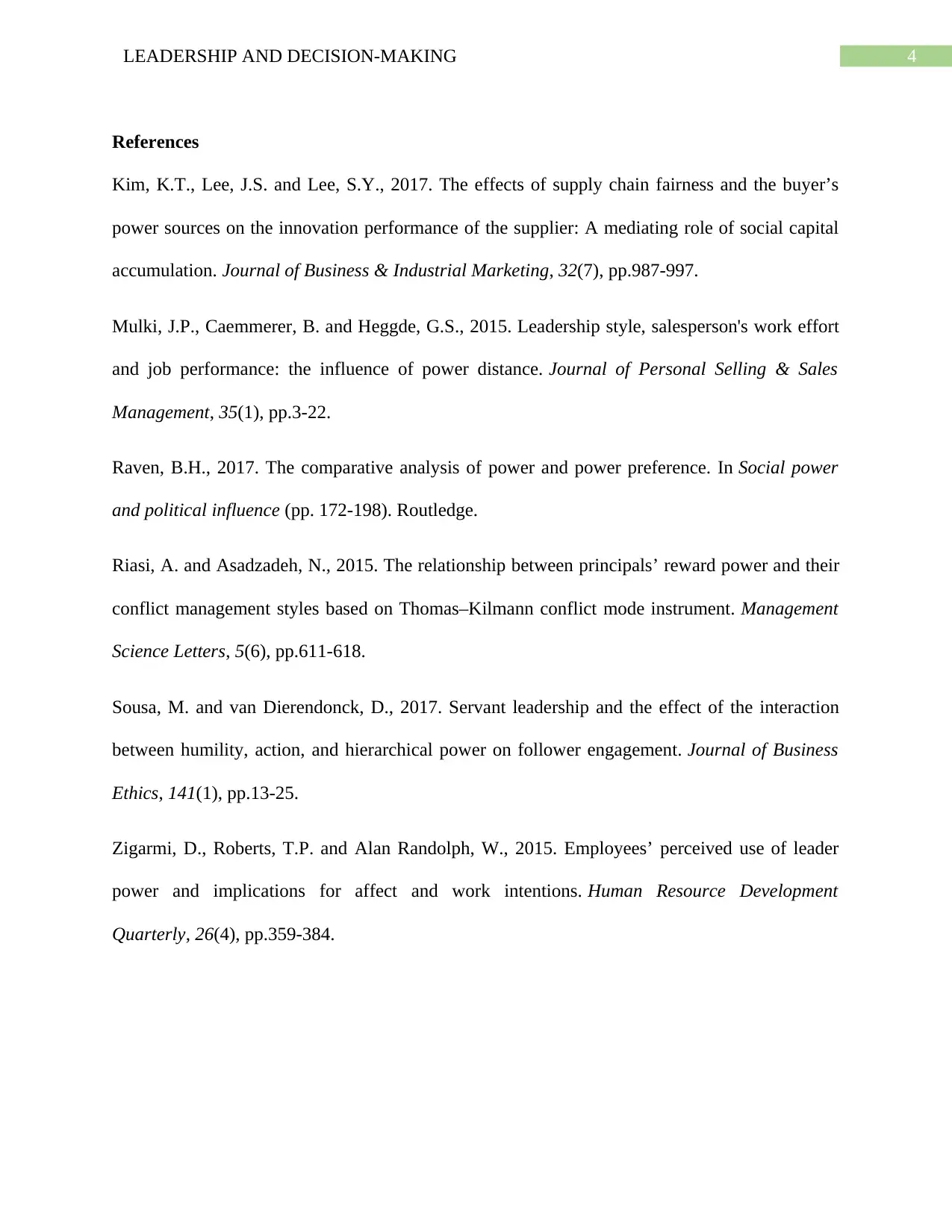Analyzing Leadership Styles and Decision-Making at Restview Hospital
VerifiedAdded on 2023/06/08
|5
|1135
|291
Case Study
AI Summary
This case study analyzes the leadership and decision-making processes within Restview Hospital, focusing on the roles of the facility administrator, Jack Morelli, and the accounting manager, Mary Carter, in the selection of new accounting software. The assignment explores different types of social power, including legitimate, expert, and referent power, as demonstrated by the key individuals involved. Jack Morelli is identified as exhibiting legitimate power due to his position and personal connections, overriding the accounting manager's expert recommendations. Mary Carter, the accounting manager, demonstrates expert power by gathering and analyzing information to determine the most suitable software. The president of the Standard Software Process is seen to have referent power, as the company's services are not up to the mark. The analysis highlights the impact of these power dynamics on the decision-making process and the potential consequences of prioritizing personal relationships over expert advice and user-friendliness. The case study uses the case study to discuss how the differing power styles have affected the software selection process.
1 out of 5






![[object Object]](/_next/static/media/star-bottom.7253800d.svg)